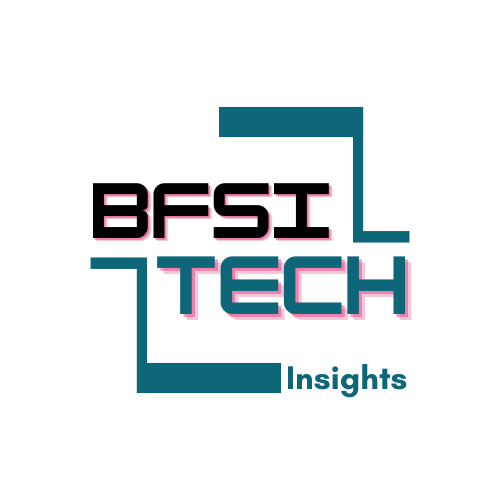Not Just Numbers: AI’s Quest to Redefine Who Deserves Credit
- BFSITech Insight ™

- Jun 14
- 4 min read
Updated: Aug 7
The world of finance has traditionally relied on credit scores to assess borrowing potential. However, this system has created a significant credit gap, particularly for millions of people without formal credit histories. In fact, according to a 2023 report by the Consumer Financial Protection Bureau, over 45 million Americans remain credit invisible. Fortunately, the emergence of AI and big data-driven alternative credit scoring models is changing this outdated landscape, paving the way for more inclusive lending practices. By utilizing non-traditional data sources, these innovative models promote financial inclusion and improve access to credit for those who need it most.
Limitations of Traditional Credit Scoring
Traditional credit scoring methods primarily rely on historical financial data. This narrow focus often leaves out individuals considered "credit invisible"—those without established credit. For instance, a report by the Federal Reserve found that about 26% of adults in the U.S. do not have credit scores, affecting their ability to secure loans or affordable interest rates.
This reliance on narrow data can reinforce existing biases, disproportionately affecting minority communities and those from low-income backgrounds. As these individuals struggle to build credit, they face additional barriers, which perpetuates financial inequality.
What Are Alternative Credit Scoring Models?
Alternative credit scoring models offer a solution to the shortcomings of traditional methods. These models leverage AI to analyze a wide range of data sources, including mobile payment histories, online shopping habits, social media activities, and utility bills. By tapping into these diverse data points, they can more accurately assess creditworthiness, particularly for underserved populations.
Examples
Tala: Operating primarily in emerging markets, Tala uses smartphone data to provide microloans. Their approach has not only improved access to credit but also helped users build financial literacy and stability. In 2024, Tala reported an 82% repayment rate among its borrowers, showcasing the effectiveness of their models.
LenddoEFL: This innovative platform combines digital footprints and psychometric evaluations to assess borrowers. By analyzing social media interactions alongside financial behavior, LenddoEFL offers a more nuanced view of credit risk. A recent study showed that using their model could increase loan approval rates for previously unscored applicants by 30%.
KreditBee: In India, KreditBee utilizes alternative data to provide instant personal loans. This model cuts down on processing time, allowing users to receive funds within minutes rather than days, effectively meeting urgent financial needs.
Benefits
The shift toward alternative credit scoring provides numerous benefits, not just for lenders, but for consumers as well.
Financial Inclusion
One of the key advantages of alternative scoring methods is the increased access they offer to unbanked and underbanked populations. The World Bank reported that improving access to finance is essential for economic growth and poverty alleviation, demonstrating the vast potential impact of these models.
Improved Risk Prediction
AI-driven models have been shown to enhance accuracy in predicting credit risk by 20-30%, according to McKinsey research from 2024. This newfound precision not only reduces the risk of defaults but makes the lending process more efficient.
Faster Decisions
With alternative credit scoring, loan approvals can occur instantly. This rapid response ensures that individuals can secure necessary funds when they need them most, enhancing their quality of life and financial stability.
Adaptive
These models are capable of real-time updates, allowing them to respond to changes in consumer behavior and market conditions. This adaptability ensures that credit assessments remain relevant and reliable.
Challenges
Despite the advantages, transitioning to alternative credit scoring models poses certain challenges.
Privacy
Adhering to regulations like the GDPR and CCPA is essential for safeguarding consumer data. Organizations must prioritize transparency and data protection when using these technologies.
Bias
Algorithmic discrimination remains a concern. It is crucial that developers create models that do not perpetuate existing biases. A 2023 Harvard Business Review study highlighted the need for fairness in credit evaluations to protect marginalized groups.
Regulation
Fintech companies often face difficulties navigating the unclear regulatory landscape surrounding alternative credit scoring. As laws evolve, strategies must adapt to ensure compliance while fostering innovation.
Consumer Awareness
Transparency in how alternative data is utilized for credit assessments is vital. Consumers should understand how their data impacts their financial opportunities, including potential implications for their credit profiles.
Future Trends
Several trends are emerging in the field of alternative credit scoring.
Wider Adoption of Open Banking
The growth of open banking will enhance the integration of financial data sharing, potentially improving credit scoring models and ensuring they reflect true borrowing potential.
Development of Explainable AI
There is an increasing emphasis on creating explainable AI systems. These efforts aim to enhance transparency, allowing consumers to comprehend how credit decisions are made—ultimately building trust.
Market Expansion
Alternative scoring models are anticipated to grow in both emerging markets and developed countries where traditional systems often leave gaps in credit access. This expansion is likely to benefit millions of underserved borrowers.
Integration of ESG Metrics
The incorporation of Environmental, Social, and Governance (ESG) metrics into credit assessments may soon become standard. This would reflect growing consumer values and societal expectations in evaluating creditworthiness.
Inclusive Credit Access for All
AI and big data are set to revolutionize credit scoring, creating a more inclusive and accurate lending environment. By harnessing the capabilities of alternative scoring models, lenders can extend credit access to underserved communities and improve the overall accuracy of credit assessments.
To maximize the potential of these innovations, responsible practices and evolving regulatory frameworks must keep pace with technology. This will help ensure a future where credit access is fair and equitable, benefiting every borrower and lender across the financial landscape.

Subscribe to our free newsletter on Linkedin for more recent updates and insights on transforming traditional systems with digital wallets, embedded finance, and decentralized systems.






Comments